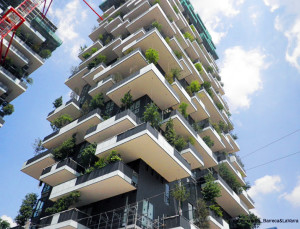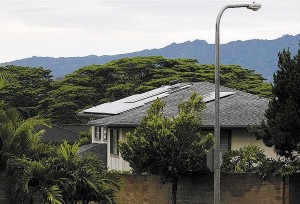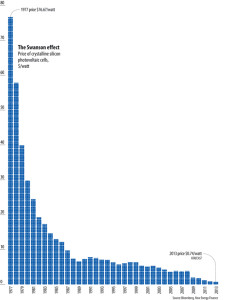by DIANE PHAM, Inhabitat.com, January 25, 2014

Boeri Studio’s Bosco Verticale vertical forest is nearing completion in Milan
Photo: Barreca & LaVarra
Source: www.inhabitat.com
Back in 2011 we reported on the Bosco Verticale — a new superstructure designed to bring the world’s first vertical forest to Milan, Italy. While many were skeptical when it came to the feasibility of construction, Boeri Studio reports that the structure is certainly more than just a fantasy — in fact it’s well on its way to being completed this year. The project’s two towers have already reached full height, and since April of 2012, teams have been installing trees on the structure. Though construction has slowed due to rain and snowfall in Milan over the last couple months, things are anticipated to kick up again very soon to meet the late 2013 opening.
Milan is one of the most polluted cities in the world, and the Bosco Verticale project aims to mitigate some of the environmental damage that has been inflicted upon the city by urbanization. The design is made up of two high-density tower blocks with integrated photovoltaic energy systems and trees and vegetation planted on the facade. The plants help capture CO2 and dust in the air, reduce the need to mechanically heat and cool the tower’s apartments, and help mitigate the area’s urban heat island effect – particularly during the summer when temperatures can reach over 100 degrees.


